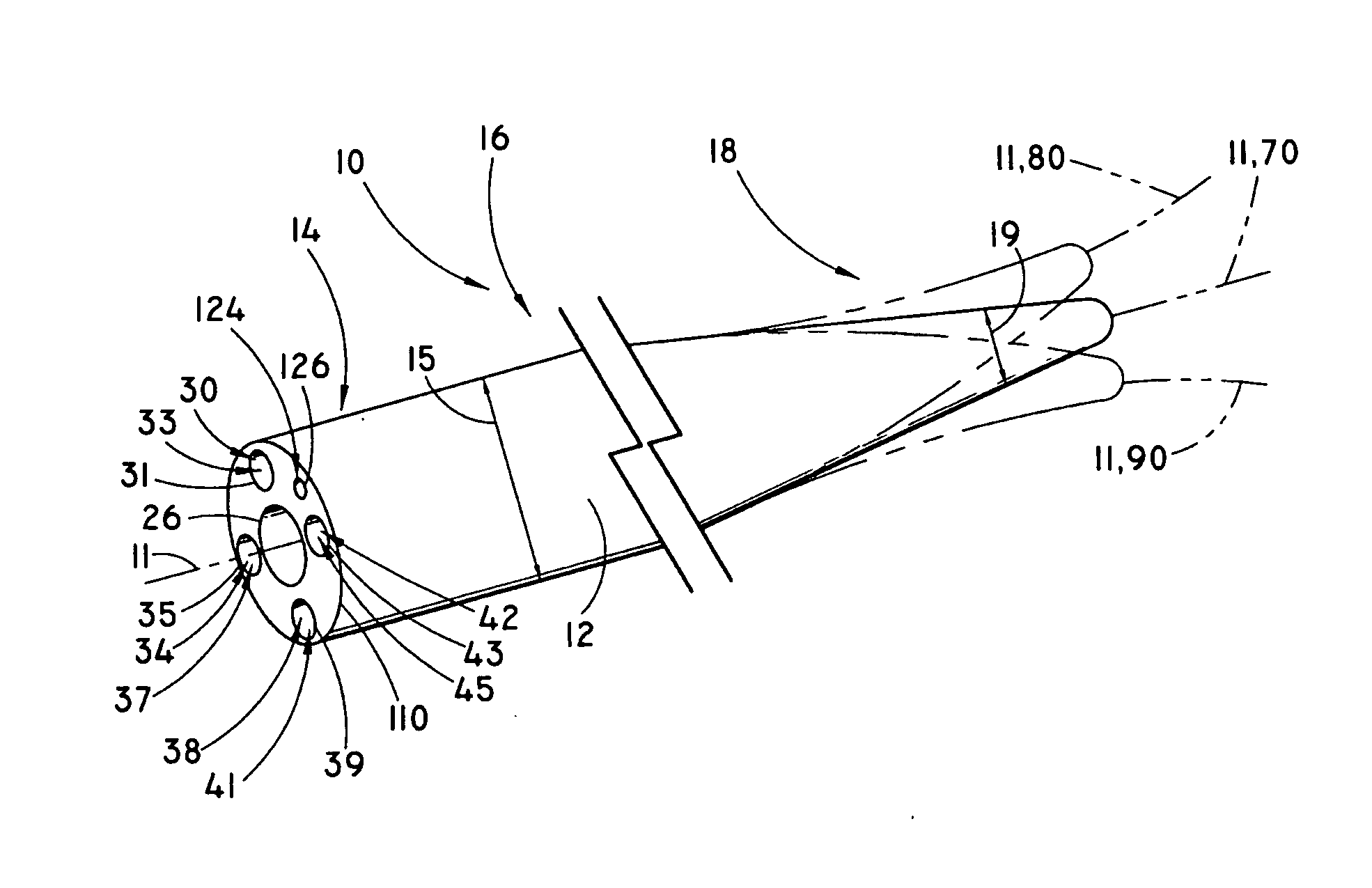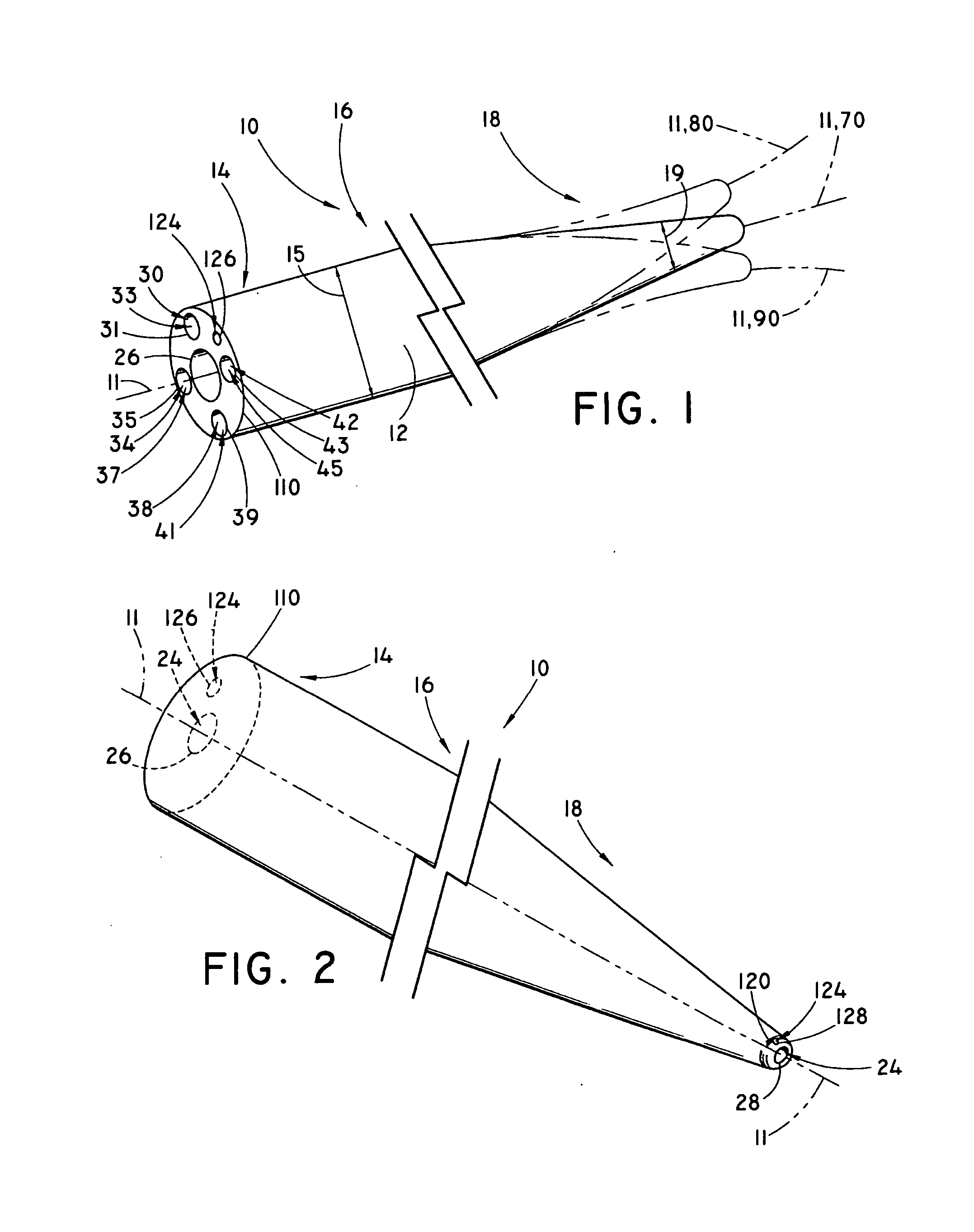Steerable catheter devices and methods of articulating catheter devices
- Summary
- Abstract
- Description
- Claims
- Application Information
AI Technical Summary
Benefits of technology
Problems solved by technology
Method used
Image
Examples
Embodiment Construction
[0043] Although not limited in its scope or applicability, the present inventions relate generally to steerable catheter devices used percutaneously, through an endoscope working channel, or through an accessory channel used with an endoscope. More particularly, and by way of illustration and not by way of limitation, the present inventions relate to steerable catheter devices comprising one or more channels having an occluded distal end at or near a flexible second end portion of the catheter. The occluded distal end distends axially under an internal fluid pressure, and thereby deflects and steers the device.
[0044] For the purpose of promoting an understanding of the principles of the invention, the following provides a detailed description of embodiments of the invention as illustrated by the drawings as well as the language used herein to describe the aspects of the invention. The description is not intended to limit the invention in any manner, but rather serves to enable thos...
PUM
 Login to View More
Login to View More Abstract
Description
Claims
Application Information
 Login to View More
Login to View More - R&D
- Intellectual Property
- Life Sciences
- Materials
- Tech Scout
- Unparalleled Data Quality
- Higher Quality Content
- 60% Fewer Hallucinations
Browse by: Latest US Patents, China's latest patents, Technical Efficacy Thesaurus, Application Domain, Technology Topic, Popular Technical Reports.
© 2025 PatSnap. All rights reserved.Legal|Privacy policy|Modern Slavery Act Transparency Statement|Sitemap|About US| Contact US: help@patsnap.com



